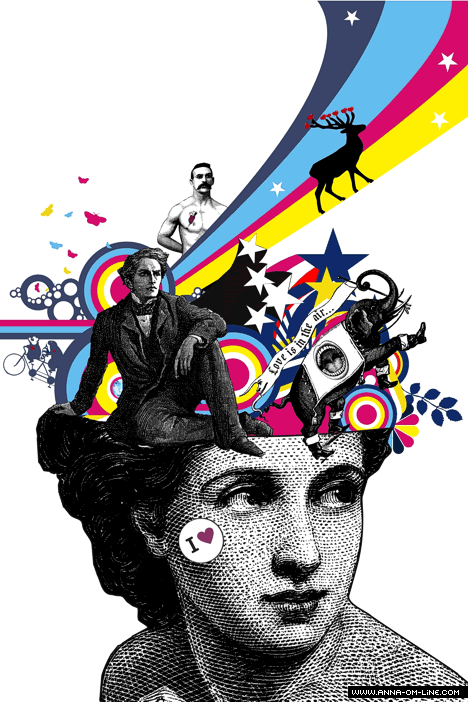It's pretty easy to find stuff about poster history, so I don't think it's necessary to elaborate on that. The general consensus seems that a poster is printed, and utilizes involves textual and graphic elements.
I think something that's pretty funny is that tons of things have been made into posters and they are now sold en masse only (thinking of the poster sale at the Reitz colonnade). So what once started as the introduction of a new fine art, has been overtaken by its reproducibility and accessibility. Obviously there are still printmakers and graphic designers making fine art posters, so it's not like the art of the poster is dead. It's definitely still very much alive and growing - I'm just saying that nowadays the immediate reference you make when you hear "poster" is not "art", but "advertisement".
When I think posters, I mostly think of old late nineteenth and early twentieth century posters like Jules Cheret and Alfons Mucha. I also think of posters today we see in FAC by our own graphic designers, for Ligature and concerts and Payne's Prarie and whatnot. I guess here's three that I like in particular:
Alfons Mucha's Four Seasons:
So this is one of Mucha's typical art nouveau posters. I think the reason why I'll always love his poster work is because the imagery seems so classic and timeless. The line and color qualities are exactly what I'm attracted to. I'm always attracted to the interaction between delicate and strong, which is exactly what those black outlines exemplify. There's an organic beauty and an air of mystery about all his female figures. They promote this idea of beauty that is natural, introverted.. something that's not advertised very often anymore.
Shepard Fairey:
I first heard about Shepard Fairey when my roommate, who's a graphic designer, said that they got to meet him or visit him or something. Anyways, this is an example of his most recent work. A lot of his stuff is huge and painted as murals moreso than posters. He uses the conventions of propaganda to promote nonviolence and the end of war. I like his imagery because he uses this color palette (red and black) that is stereotypically violent in order to promote something that's completely the opposite. He's putting the power of propaganda into a peaceful and welcoming context.
Echo Chernik:
I liked Echo because he's a contemporary art nouveau designer who uses old poster influence to create imagery and type that is relative to today's market and ideals. Though I like the original art nouveau better, I feel like there's something satirical in Echo's work that I think is really funny and maybe even poignant. I feel like there's a good chance that I'm just imagining that this element exists, but there's like an aesthetic he has that's somewhat kitschy, as in, its reminiscent of over manufactured illustrations of buxom women with no substance or reason for existing other than to please your visual palette. But when he juxtaposes it with this art nouveau design, it becomes something that's undeniably attractive and... just that process alone, that happened in my head, is worth liking this guy.































